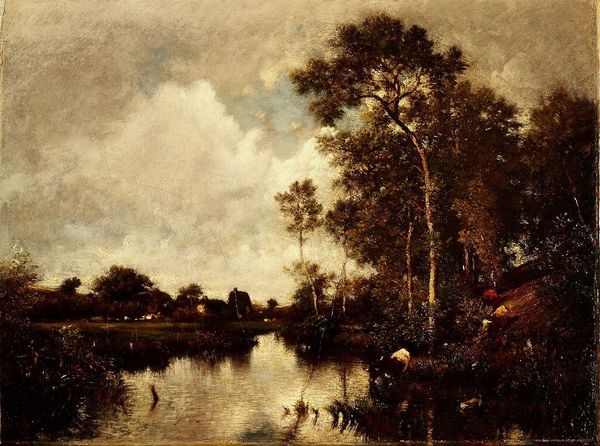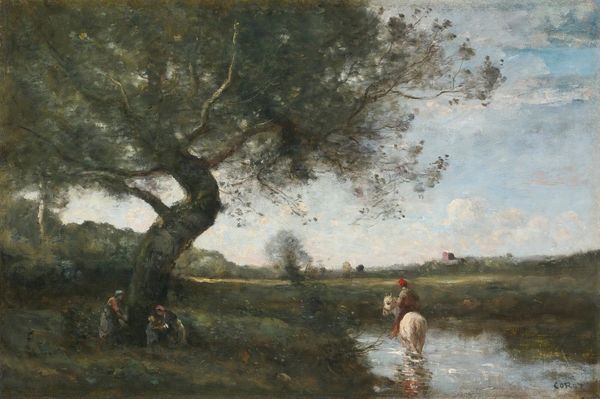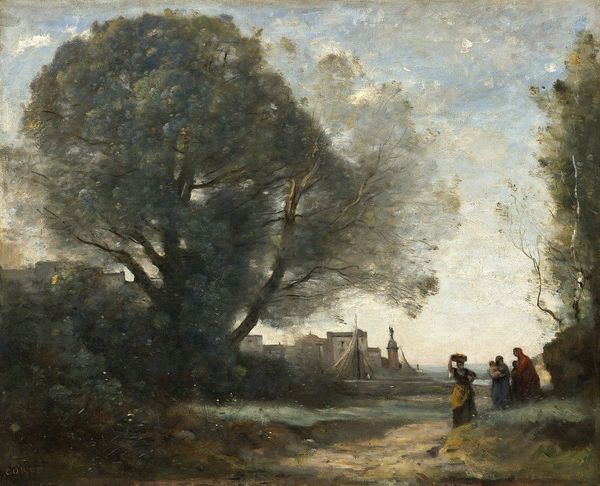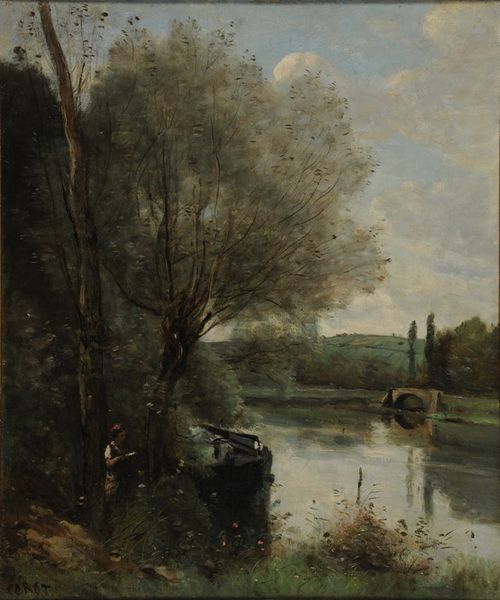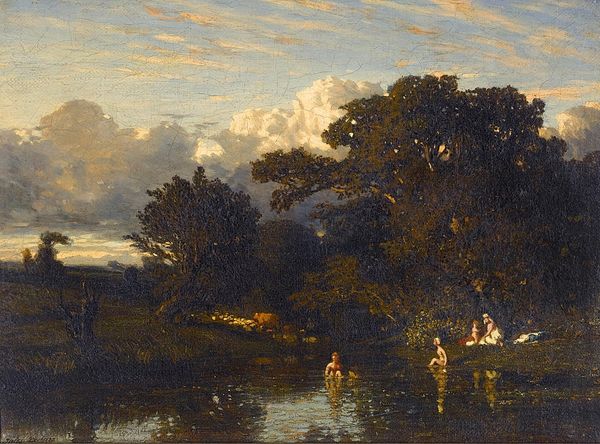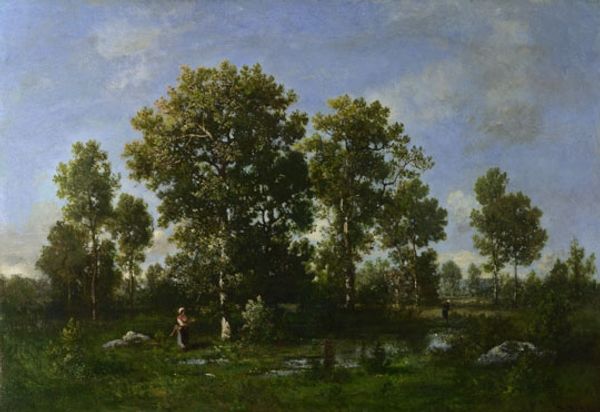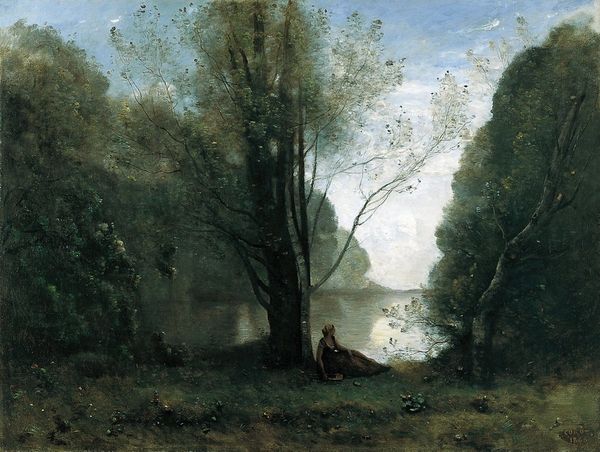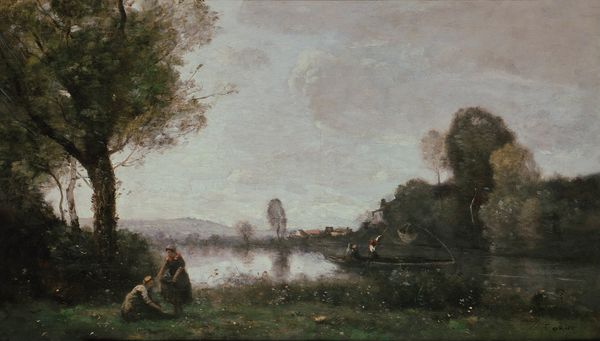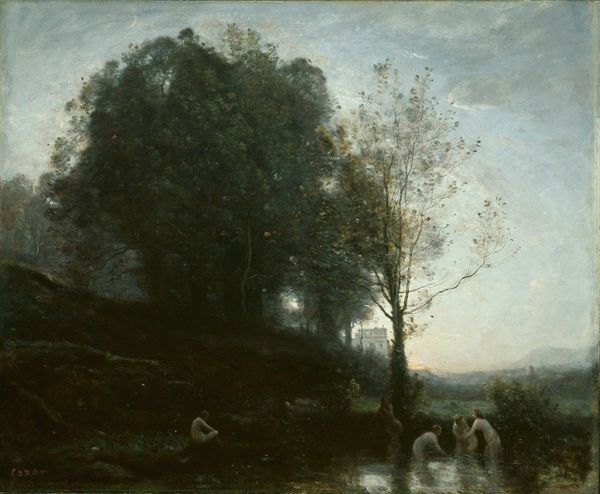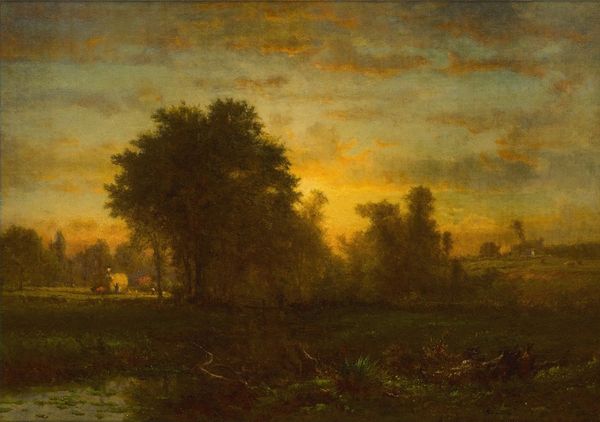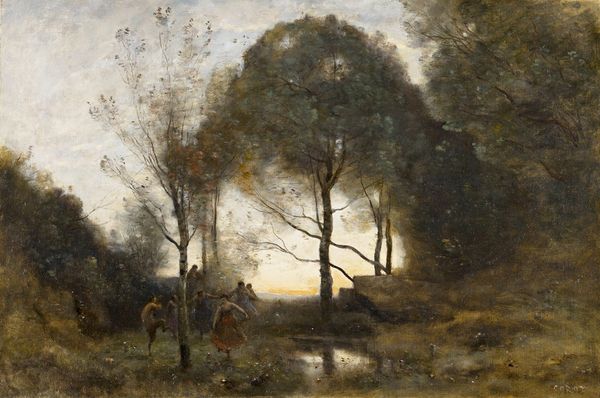
Copyright: Public Domain: Artvee
Curator: What an entrancing piece. This is "Seraglio, Constantinople," an oil painting crafted between 1865 and 1875 by Narcisse Virgilio Diaz. It pulls us into a vibrant, imagined scene. Editor: My immediate feeling is one of profound stillness. There's a humid quiet hanging over this scene. The reflecting pool acts like a mirror, not just for the architecture but perhaps for deeper contemplation, a mirroring of inner worlds. Curator: The architecture itself certainly resonates. The Moorish arch, repeated in the distance, whispers of gateways, thresholds, perhaps alluding to passages both physical and spiritual. Its shape also strongly conveys the continuity and flow, of life and history and also suggests of feminine sacred space. Editor: Absolutely. Though, within that tranquil scene, it's impossible not to read the painting's place within Orientalism. The 'exotic' is aestheticized, with a lack of deeper understanding about the people depicted. The women are present, seemingly at leisure, but remain largely undefined, their stories muted, reduced to serving this visual, exotic vision. Curator: Indeed. The romanticized representation certainly flattens the individual narratives of those represented. Yet, Diaz was known for a painterly style that favored mood and atmospheric effects, and it's in this area that we can glean how symbols shape memory. Note the loose brushstrokes creating this idyllic fantasy which offers some subtle insights to European imagination of 'The Orient' as feminine, lush, passive, mysterious, timeless and ahistorical. Editor: It’s critical to hold both perspectives. To appreciate the painting's aesthetic qualities while simultaneously unpacking the complicated socio-political dynamics it perpetuates, specifically the ways in which women are imagined, controlled, and misrepresented across art history, in which context informs content. The dog also. Do you think the image includes him for purposes of class commentary or sentimental narrative? Curator: I would suggest perhaps to offer a semblance of domesticity; there is definitely something familiar about a household animal here. Also note that there are not children playing freely but in their parent's laps. Maybe the scene shows what European culture assumes about Islamic customs on gender? Editor: Perhaps. Regardless, situating Diaz's "Seraglio, Constantinople," within those crosscurrents allows us to reflect on its legacy and question the role art plays in constructing and reinforcing dominant ideologies, a complex tension, after all. Curator: Precisely. Art, in its beauty, may yet serve as an opening, and in confronting uncomfortable themes we allow ourselves to learn how cultural symbols evolve and the cultural implications of images change over time.
Comments
No comments
Be the first to comment and join the conversation on the ultimate creative platform.

